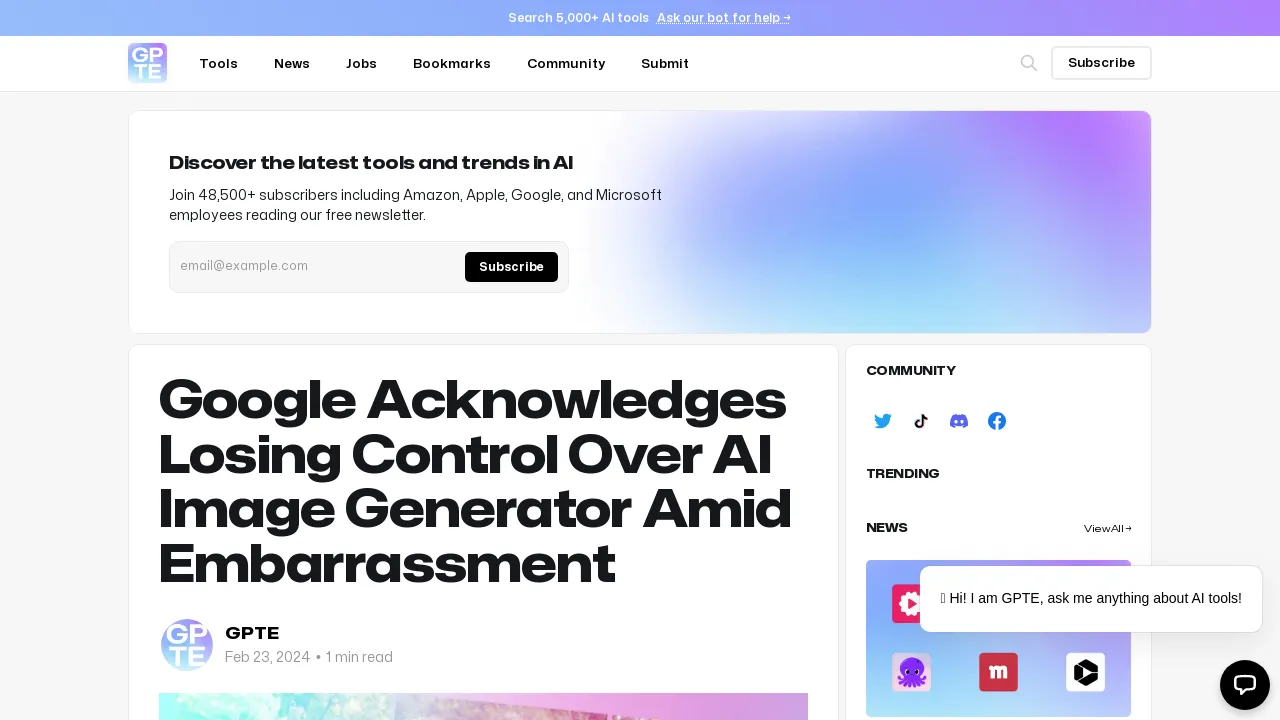Google Acknowledges Losing Control Over AI Image Generator Amid Embarrassment

Google Acknowledges Losing Control Over AI Image Generator Amid Embarrassment Overview
Google has recently faced criticism for a mishap with its AI image-generating model, which inappropriately added diversity to images without considering historical accuracy. The tech giant attributes this error to the AI's over-sensitivity and has issued an apology for the incident. This event has sparked a discussion about the role of AI in historical representation and the challenges in AI development regarding cultural sensitivity and historical context.
Google Acknowledges Losing Control Over AI Image Generator Amid Embarrassment Highlights
- The AI image-generating model was criticized for inappropriately adding diversity to images without considering historical accuracy.
- Google has issued an apology for the mishap, attributing the error to the AI's over-sensitivity.
- The incident has raised questions about the role of AI in historical representation and the challenges in AI development regarding cultural sensitivity and historical context.
Use Cases
A business involved in AI development could use this incident as a case study to understand the importance of cultural sensitivity and historical context in AI models. This could help them avoid similar mishaps in their own products.
The business would be able to develop AI models that are more culturally sensitive and historically accurate, improving the quality of their products and potentially avoiding public criticism.
A museum or cultural institution could use Google's AI image-generating model to create exhibits or displays. However, they would need to be aware of the model's potential for inaccuracy in historical representation.
The museum or cultural institution would be able to create visually engaging exhibits or displays, but they would need to manually verify the historical accuracy of the images generated by the AI.
A historian or educational institution could use Google's AI image-generating model to create visual aids for teaching. However, they would need to be aware of the model's potential for inaccuracy in historical representation, as highlighted by the recent incident.
The historian or educational institution would be able to create engaging visual aids for teaching, but they would need to manually verify the historical accuracy of the images generated by the AI.